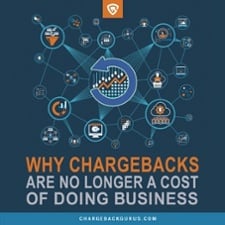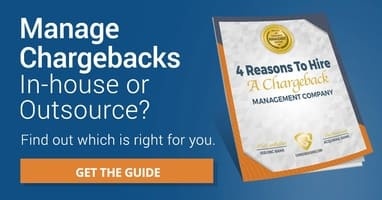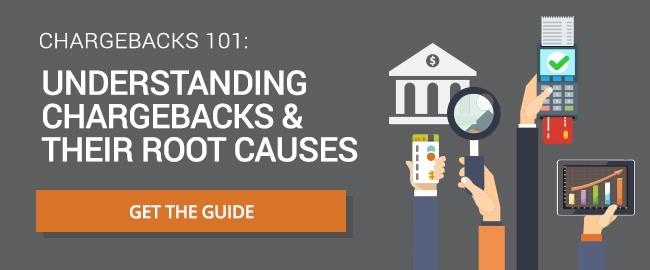How Return Policies Affect Chargeback & Dispute Ratios
Table of Contents
- Handling returns on perishable goods
- Handling returns on durable goods
- Have available customer service
- What's the difference between a refund and a chargeback?
- How do return policies affect chargebacks?
- How long does a chargeback typically take?
- Can a chargeback be canceled?
- What is a pre-authorization charge?
Competition is fierce in the world of eCommerce and attracting new customers is harder than ever. One good way to make customers feel a little more at ease about spending their money someplace new is the promise of a “hassle-free return policy.”
If the customer feels like they can easily get their money back if they’re dissatisfied, then they’ll be much more willing to take a risk buying from somewhere they’ve never shopped before. Your regular customers like easy returns, too, so a generous return policy can help with both customer acquisition and retention.
 Return policies have been around for a very long time, and there's a lot of good information available on what does and doesn't work in the world of returns. While eCommerce does present some new costs and challenges with regard to returns, many large eCommerce merchants have already experimented with a variety of different return policies, making it easier than ever for merchants to figure out what sort of policy would be best for them.
Return policies have been around for a very long time, and there's a lot of good information available on what does and doesn't work in the world of returns. While eCommerce does present some new costs and challenges with regard to returns, many large eCommerce merchants have already experimented with a variety of different return policies, making it easier than ever for merchants to figure out what sort of policy would be best for them.
Let's talk about some effective ways of handing returns for different types of goods, and take a look at how your return policy can affect chargebacks.
Handling returns on perishable goods
When you sell perishable goods, one way to make returns hassle-free is to not require them at all. It’s a waste of money to have customers return products that cannot be resold, especially if you’re using a fulfillment company that’s going to charge you for receiving and destroying returned goods.
A better practice is to simply tell customers who want a refund on perishable goods to keep or destroy the product, then go ahead and issue a refund right away (or ship a replacement, if that’s what they want).
Requiring that the product be returned in order to “prove” that they weren’t happy with it is just pointless busywork for the customer and an unnecessary expense for the merchant.
Not only does this resolve the customer’s issue in the easiest way possible for them, it also builds trust. Naturally, there’s a risk that some customers will abuse that trust, but it’s better to deal with customers like that on an individual basis rather than making all of your customers jump through hoops.
Use return-tracking features in your customer management system so that you can identify those who attempt to repeatedly request refunds on items. You can then choose to negotiate directly with those customers or simply block them from placing future orders.
Handling returns on durable goods
When a customer has a problem with an item that can be reused or resold, then you do generally want them to return it before issuing a refund. For eCommerce merchants, the best way to make this as painless as possible for the customer is to provide them with a prepaid shipping label so that all they have to do is box the item back up, stick on the return label, and either drop it off with the carrier or arrange for pickup.
Figuring out the best and cheapest way to ship a product back to the merchant is the very definition of “hassle” for most online shoppers. On average, it takes up to an hour for a customer to return an item if they have to go to the post office themselves. That’s added frustration on top of whatever disappointment they’re already feeling over the unsatisfactory product.
It will often occur to frustrated customers that it might be easier for them to just call their bank and get their money back by disputing the charge.
Prepaid shipping labels can remove some of the frustration from this process, preventing chargebacks and increasing customer satisfaction.
Track your return label numbers so that when a customer returns an item, you can issue a refund immediately instead of waiting for the item to arrive. Also make sure to email the customer to let them know that a refund has been issued.
Make sure to use a return authorization when issuing a refund. Just like a pre-authorization charge shows a pending charge to a customer's account before the transaction has fully processed, a return authorization shows a pending credit. That way the customer can see that the refund is on its way, preventing them from getting impatient and filing a chargeback.
For low-value items, it may be correct for eCommerce merchants to let the customer keep their purchase instead of asking them to return it. Depending on the cost of shipping and the time required to receive and restock the item, the revenue from selling the item again may not cover the costs of getting it back.
Have available customer service
In terms of what customers expect from eCommerce sites, we’re living in a world that has largely been shaped by Amazon, and they’ve set an extremely high bar for smaller merchants to reach. If you need to return a product purchased from them, it can be arranged with just a few clicks, from any device, at any time.
When you can make your customer service available 24/7, you greatly increase the chances that customers will deal with any issues they’re having directly with you, rather than asking their bank to step in.
The more ways you can make yourself available, the better.
Every customer has their own preferences for dealing with customer service. Some prefer talking on the phone, others want to use a live chat or simply send an email, so long as they get a satisfactory response quickly. Some companies even offer customer service via text message, which younger customers may appreciate.
If you’re only reachable during regular business hours, consider that many of your customers are likewise working during those hours, and it’s hard for them to make time for personal matters. They know they can get assistance from their bank after hours, but bank assistance for them means chargebacks for you. Provide your customers with ways to reach you during hours that are convenient for them, either with your own staff or through a reputable call center, and the vast majority of them will make a good faith effort to do so.
What's the difference between a refund and a chargeback?
Basically, a chargeback is a forced reversal of a transaction. Instead of the merchant giving money back to the customer, the customer's bank is forcing the return of the money based on their own evaluation of the customer's claim
Because of this, a chargeback can negatively impact the merchant whether or not it is a legitimate one. For example, a chargeback incurs several layers of costs and fees for merchants. Likewise, they increase the merchant's chargeback ratio, which can negatively impact the merchant's standing with credit card processors and limit how they do business.
How do return policies affect chargebacks?
Some merchants are reticent toward the idea of making it easier for customers to return purchases, but a generous return policy can not only help acquire and keep customers, but also help prevent chargebacks.
When customers feel misled by confusing or complex return policies, they may believe they have a legitimate reason to request a chargeback, and customers who find it too difficult to obtain information about returns or cannot get ahold of a live person to speak to may get impatient and file a “friendly fraud” chargeback simply because their bank is easier to deal with than the merchant.
 Customers who feel they have a valid reason to return an item but have their refund request rejected often file a chargeback instead. That's one reason it's important for merchants to have return policies that are at least as generous as the industry standard.
Customers who feel they have a valid reason to return an item but have their refund request rejected often file a chargeback instead. That's one reason it's important for merchants to have return policies that are at least as generous as the industry standard.
The best way to avoid return-related chargebacks is to devise a return policy that makes sense both for you and for your customers, removing any stumbling blocks that make it difficult for them to resolve an unsatisfying purchase.
Customers love returns that are truly hassle-free, but remember that the accommodations you offer to reduce chargebacks can also work against you by inviting fraud.
As mentioned above, the best defense against this is to track customer returns so you can see who’s making a habit of returning items and abusing your generous return policy — if you see more than two returns, you might have a problem.
Blocking these customers is important because many fraudsters are all too happy to let others know where to find merchants who are easy to take advantage of, so blocking one can preemptively stop other fraudsters from targeting you. They like low-hanging fruit — if they know your company isn’t an easy mark, they’ll move on, and the rest of your customers will appreciate the ease and convenience of your hassle-free, common-sense return policy.
FAQ
Can a chargeback be canceled?
What is a pre-authorization charge?
Thanks for following the Chargeback Gurus blog. Feel free to submit topic suggestions, questions or requests for advice to: win@chargebackgurus.com



